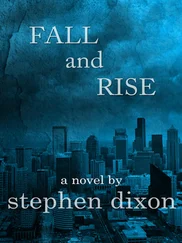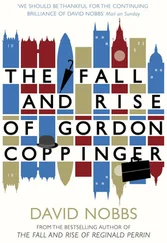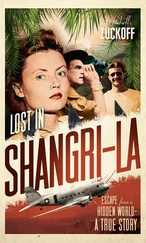The idea that hijackers might incapacitate or eliminate the pilots and fly a Boeing 767 themselves didn’t register in the minds of Boston Center controllers. To them, the old rules still applied. Zalewski kept trying to hail the plane.
CHAPTER 3
“A BEAUTIFUL DAY TO FLY”
United Airlines Flight 175
LEE AND EUNICE HANSON SAT IN THE KITCHEN OF THEIR BARN-RED home in Easton, Connecticut, nestled on a winding country road past fruit farms and signs offering fresh eggs and fresh manure. As they ate breakfast, the Hansons talked about their bubbly two-and-a-half-year-old granddaughter, Christine, who that morning was taking her first airplane flight. Christine would be flying from Boston to Los Angeles with her parents, Peter and Sue Kim, Lee and Eunice’s son and daughter-in-law, aboard United Flight 175. Lee and Eunice spent the morning watching the clock and imagining each step along the young family’s journey, turning routine stages of the trip into exciting milestones, as only loving grandparents could.
“Boy, have they got a beautiful day to fly!”
“They’re probably in the tunnel on the way to the airport!”
“I bet they’re boarding!”
Peter, Sue, and Christine were due home in five days, after which they planned to visit Eunice and Lee for a friend’s wedding. As soon as the trio walked through the door, Lee and Eunice intended to quiz them for a minute-by-minute account of their California adventure.
The Hansons didn’t know it, but that morning’s flight path for United Flight 175 crossed the sky directly northwest of their property. If they had stepped away from breakfast, walked outside to their wooden back deck, and looked above the trees on their three sylvan acres, they might have spotted a tiny dot in the morning sky that was their family’s plane. Lee and Eunice could have waved goodbye.
UNITED FLIGHT 175 was the fraternal twin of American Flight 11: a wide-bodied Boeing 767, bound for Los Angeles, fully loaded with fuel and partly filled with passengers. The two planes left the ground fifteen minutes apart.
Minutes after its 8:14 a.m. takeoff, United Flight 175 crossed the Massachusetts border and cruised smoothly in the thin air nearly six miles above northwestern Connecticut. The blue skies ahead were “severe clear,” with unlimited visibility, as Captain Victor Saracini gazed through the cockpit window.
Saracini, a former Navy pilot, had earned a reputation as the “Forrest Gump Captain” for entertaining delayed passengers with long passages of memorized movie dialogue. Alongside him sat First Officer Michael Horrocks, a former Marine Corps pilot who called home before the flight to urge his nine-year-old daughter to get up for school. “I love you up to the moon and back,” he told her. With that, she rose from bed.
The calm in the cockpit was broken when, more than twenty minutes after takeoff, a Boston Center air traffic controller working alongside Peter Zalewski asked the Flight 175 pilots to scour the skies for the unresponsive American Flight 11. Saracini and Horrocks’s initial hunt for the American plane failed, but after a second request from air traffic control, at 8:38 a.m., the United pilots spotted the silver 767 five to ten miles away, two to three thousand feet below them.
They reported their discovery, then followed the controller’s instructions to ease their jet 30 degrees to the right, to keep away from the American Airlines plane. Whatever was happening aboard Flight 11, Boston Center controllers continued to want other planes to give it wide berth.
Saracini and Horrocks acknowledged the controller’s orders and turned Flight 175 to veer away from Flight 11. As they did, something nagged at the United pilots. They didn’t mention it to their Boston Center air traffic controllers, but shortly after taking flight, Saracini and Horrocks had heard a strange and troubling transmission on a radio frequency they shared with nearby planes, including Flight 11.
LIKE AMERICAN FLIGHT 11, United Flight 175 had lots of empty seats, flying at about one-third capacity. The fifty-six passengers were in the hands of nine crew members: the two pilots plus seven flight attendants. Perhaps the biggest difference between the United and American flights to Los Angeles on the morning of September 11 was the sounds inside the cabins: only adults boarded Flight 11, while the high-pitched voices of young children rang through United 175.
Heading home to California from a vacation on Cape Cod, three-year-old David Gamboa Brandhorst, who had a cleft chin and a deep love of Legos, sat in business class Row 8 between his fathers. To his left sat his serious “Papa,” Daniel Brandhorst, a lawyer and accountant. To his right sat his happy-go-lucky “Daddy,” Ronald Gamboa, manager of a Gap store in Santa Monica.
Nestled in 26A and 26B of coach were Ruth Clifford McCourt and her four-year-old daughter, Juliana. They’d driven to the airport and spent the previous night with Ruth’s best friend and Juliana’s godmother, Paige Farley-Hackel, who was heading to Los Angeles aboard American Flight 11. Blond and big-eyed, with porcelain skin, Juliana loved creatures large and small. She’d tell anyone who’d listen that she had recently learned to ride a pony. That day she’d smuggled aboard an unticketed passenger: a green praying mantis she’d found in the garden of her family’s Connecticut home. It resided in an ornate little cage on Juliana’s lap, her companion for when they reached California. Her mother, Ruth, a striking woman who spoke with a trace of her native Ireland, carried a special item, too: a papal coin from her wedding at the Vatican, tucked safely into her Hermès wallet.
The third little passenger of Flight 175 sat in Row 19: Lee and Eunice Hanson’s granddaughter, Christine Lee Hanson, flanked by Peter and Sue. Surrounding the Hansons and the other families on United Flight 175 were a mix of business and pleasure travelers.
The Reverend Francis Grogan, heading west to visit his sister, occupied a first-class seat with a ticket given to him by a friend. After serving as a sonar expert on a Navy destroyer during World War II, Father Grogan had traded conflict for conciliation. He spent his life as a teacher, a chaplain, and a parish priest.
In business class sat former pro hockey player Garnet “Ace” Bailey, a fierce competitor who spent ten seasons in the National Hockey League and won two Stanley Cups with the Boston Bruins in the 1970s. Hardly a delicate ice dancer, Bailey served a total of eleven hours in the penalty box during his bruising NHL career. At fifty-three, still tough, Ace Bailey had become director of scouting for the Los Angeles Kings of the NHL. He’d also cemented a relationship as friend and mentor to hockey legend Wayne Gretzky, in part by helping Gretzky to overcome his fear of flying. When Ace wasn’t on the road, he treated his wife, Kathy, and son, Todd, to a dish he called “Bailey-baisse,” a medley of sautéed meats baked with onions and tomatoes. A few rows back, in coach, sat the Kings’ amateur scout, Mark Bavis, a former hockey standout at Boston University. Training camp would soon begin, and Bailey and Bavis were needed on the ice in Los Angeles.
Retired nurse Touri Bolourchi expected to be home in Beverly Hills by the afternoon, after visiting her daughter and grandsons in Boston. An Iranian-born Muslim, she’d fled to the United States two decades earlier when the Ayatollah Ruhollah Khomeini closed the schools. Touri added to Flight 175’s international mix: also aboard were three German businessmen, an Israeli woman, and a British man.
Among the crew members were two flight attendants in love: Michael Tarrou, a part-time musician, and Amy King, a onetime homecoming queen. They’d recently moved in together, and they had arranged to work the same flight so they could spend time together during a layover. All signs pointed to marriage.
Читать дальше












